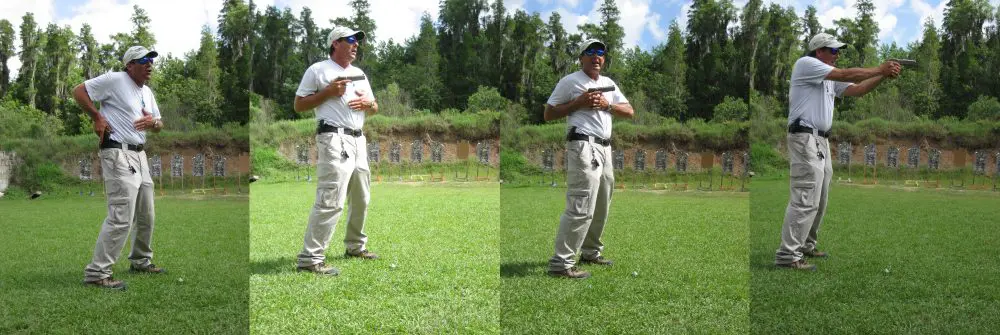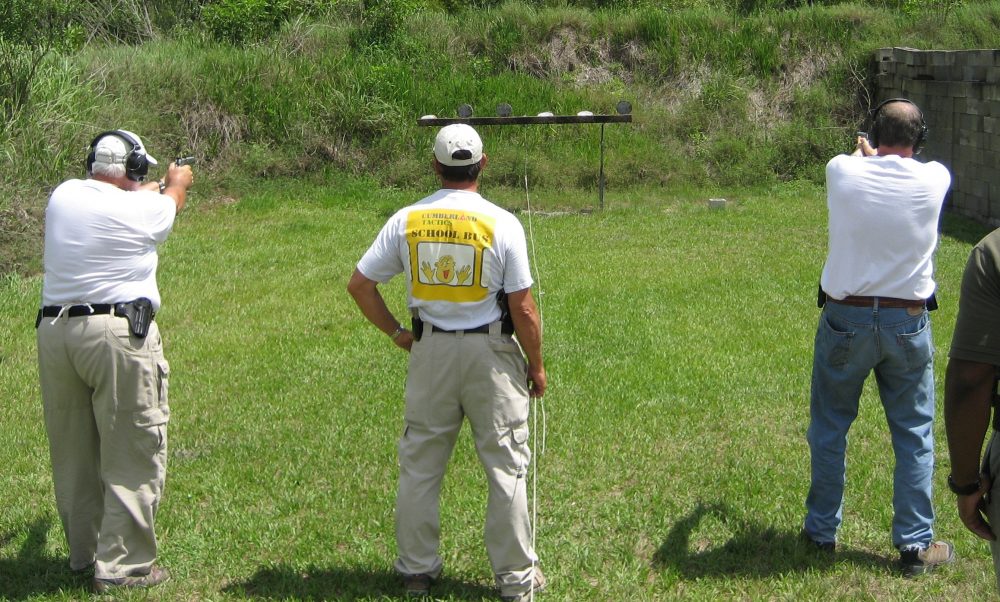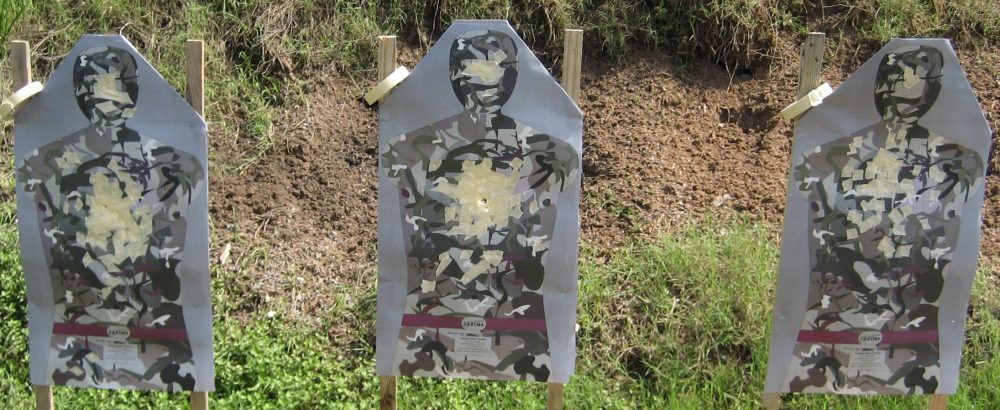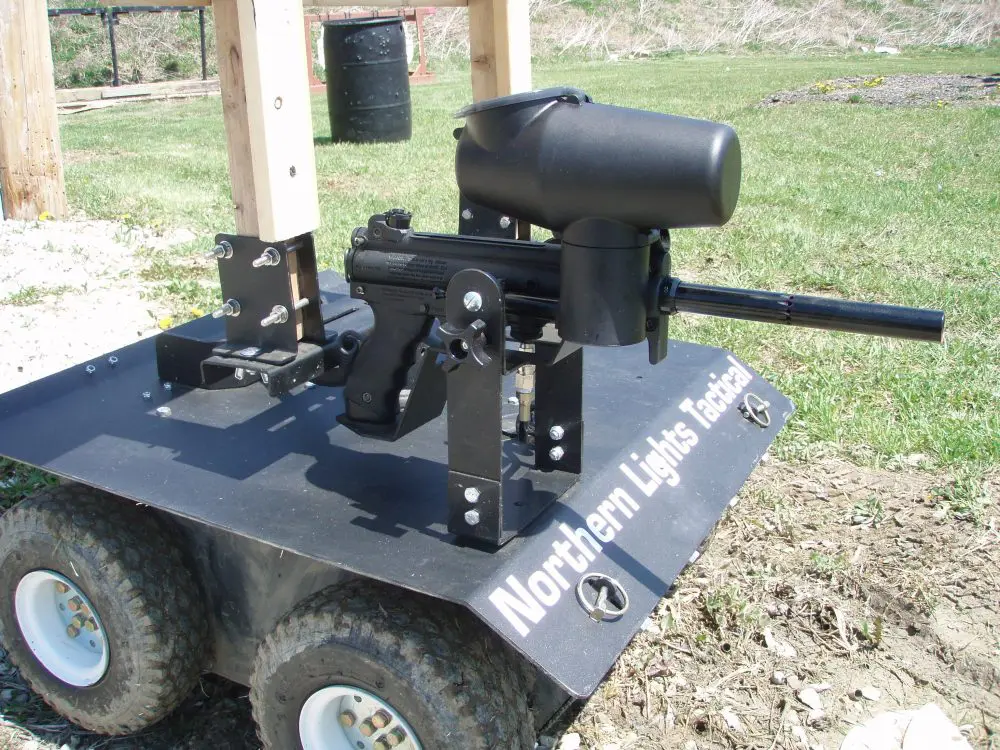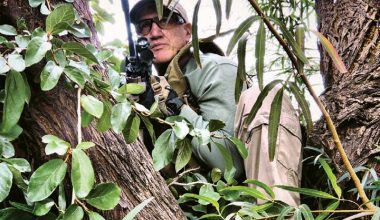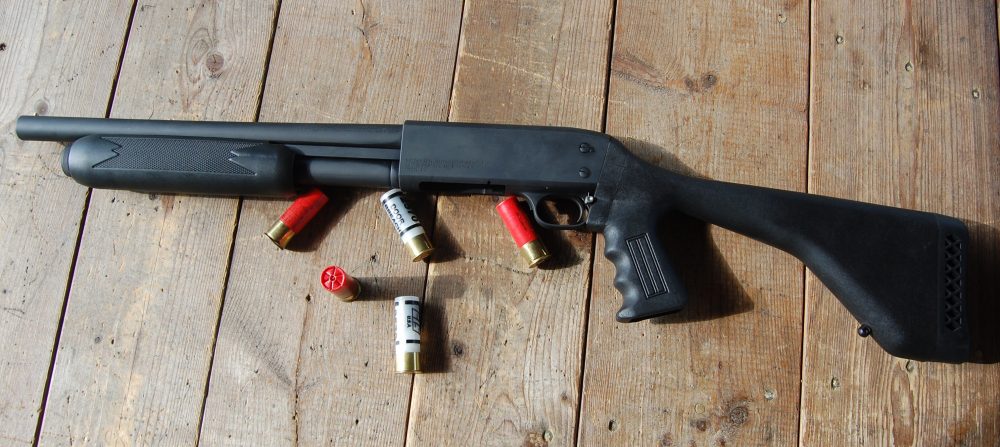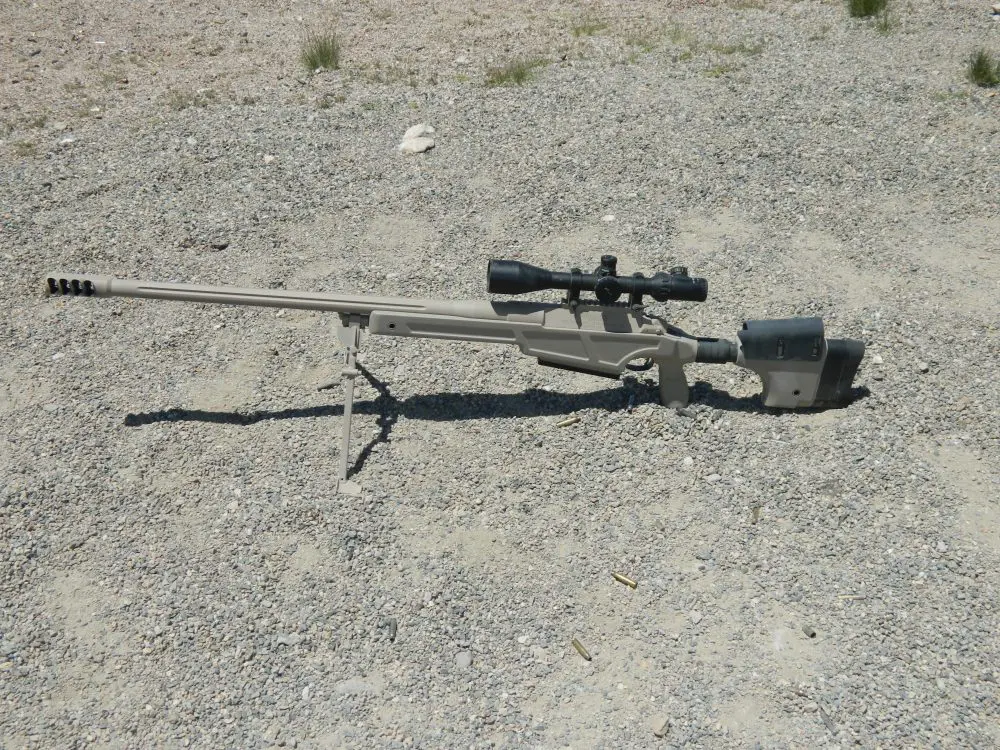Cain demonstrates four-step drawstroke.
When I was a kid in the early 1980s, I wanted a digital watch in the worst way. Not only was it a cool thing that all my friends had (hey, it was the ’80s!), it was also a way around not knowing how to tell time on a traditional clock with hands.
Fortunately my parents saw things a different way and required that I learn and demonstrate the fundamentals of telling time before I moved on to the crutch of a digital watch. Similarly we all learn to do math before we’re given a calculator, to ride a bicycle before a motorcycle, and the age-old cliché of learning to walk before we run.
The key in all cases is learning the fundamentals, the right way, before we move on to more complex (and sometimes more dangerous) pursuits. We learn the fundamentals, and we stack other lessons upon those, but the fundamentals are always the foundation.
Like a lot of folks, I have shifted focus to the carbine in the last couple of years, and my pistol shooting ability has suffered as a result. The longer barrel, the easy addition of optics, the more stable firing grip, as well as other aspects, all combine to make getting a hit on a given target at a given distance far easier with a long gun than with a pistol. And because of this, the skills are less perishable and require less work to maintain than pistol skills. The problem with this shift in focus is that, for the vast majority of us operating outside of the military, the handgun is truly the “primary,” and as such is the skillset we should really be focusing on.
Cain demonstrates several methods of press checks. One of Cain’s strengths is that he presents multiple methods for doing something, explaining the plusses and minuses before explaining what he uses and why.
Combined with this was a shift in handgun platform from the Glock to the 1911 to cover up my deficiencies in skill and work ethic. I used the same old arguments about the 1911 fitting my hand better, the trigger being better, the availability of more options to custom fit the gun to me … but the reality is that the 1911 doesn’t make you (well, me) a better shooter. Just like the carbine, it simply masks the deficiencies in one’s abilities and glosses over the fact that the fundamentals are lacking or have been forgotten. And forgetting, or never truly grasping, those fundamentals means that eventually you will reach a plateau in your abilities that you can’t get past.
In “Special Operations For The People” (May 2009 S.W.A.T.), author Victor Wong quotes Tigerswan principal Brian Searcy as saying “It all begins with the ability to deliver a single well-aimed shot on a single target.” I have amended the quote for myself to add the concept of movement: “It all begins with the ability to get a single hit on a single stationary target while standing still,” due to the recent trend in training classes and other events adding in the element of movement, both of the shooter and the target. The problem is that if the shooter can’t do what Searcy says while standing still, then adding in movement will simply amplify, and can even reinforce, bad habits and a lack of focus on the fundamentals.
With all of this in mind, I decided to get back to my roots. Several years ago I took a three-day Tactical Handgun 101 (TH101) class with Randy Cain of Cumberland Tactics at the Southern Exposure Training Facility outside of Lakeland, Florida. In reading back over my yellowed notes from that first class, I realized that Randy’s method of teaching was right in line with that old digital watch example as well as my new-found mantra. From the Cumberland Tactics website, TH101 is described as “a complete introduction to the defensive use of the handgun” and “appropriate for beginners and is also recommended as a refresher for those with experience.”
Students compete head-to-head on steel plates.
This was exactly what I needed, especially that last part, and having taken the class once before, I thought I knew what to expect. I decided to take the class with a Glock rather than my usual 1911 in an effort to get back to the fundamentals, under the theory that if I could learn to shoot the Glock well, I could certainly shoot the 1911 well, if I still wanted to go back to it at all!
Table of Contents
TRAINING DAY ONE (TD1)
The first day began with a lecture on the Four Rules of Safe Gun Handling and a briefing on range etiquette and emergency procedures. From there we moved out to the five yard line and Cain instructed us on how to load, unload and press-check our pistols.
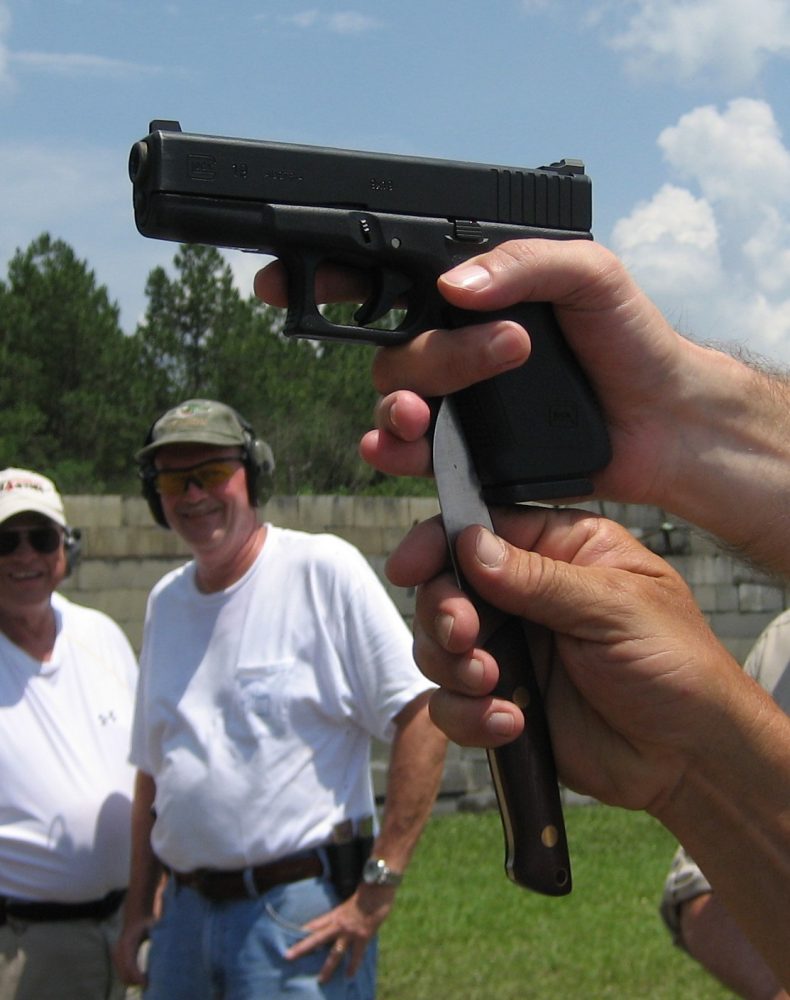
Cain then asked us to put three rounds through a single piece of tape. My performance was atrocious, with my group being embarrassingly far low and to the left. Randy has a gift for diagnosing the shooter’s performance, breaking down any errors in shot placement to their cause. He moved up and down the line evaluating all of the targets.
Within minutes he had evaluated my troubles, made suggestions as to how to adjust my technique, and had my groups going from very low and left to the right, to in line horizontally and slightly less left. With just a little more instruction, and provided that I took my time and applied the fundamentals, I was able to hit right where I was aiming.
Randy spent the rest of TD1 building on these fundamentals, adding in tactical reloads, the fighting stance, moving, shooting on the move and failure drills. We finished up the day with failure drills on the move. Due to inclement weather after lunch, Randy delivered the Mindset portion of the class on TD1 instead of TD3, which served to remind all of us why we were really there, and seemed to have a positive effect on the focus of every shooter.
TRAINING DAY TWO (TD2)
We started with a brief refresher of the lessons on fundamentals that we had learned the previous day. Unfortunately the lessons of TD1, and even my dry-fire practice in the hotel room that morning, escaped me and I began to make the same mistakes.
With the patience of Job, Randy again reviewed the fundamentals and addressed my issues. Randy has a way of addressing things on an individual basis so that everyone on the line benefits from the points that he is making. He also manages to call attention to an individual shooter’s shortcomings in a way that is not embarrassing, but serves as teaching points for all in attendance. This is no small feat, and is a skill that not all trainers share. In other words, although I was clearly the weak link on the firing line, due to Randy’s approach I didn’t feel like I was wasting everyone’s time.
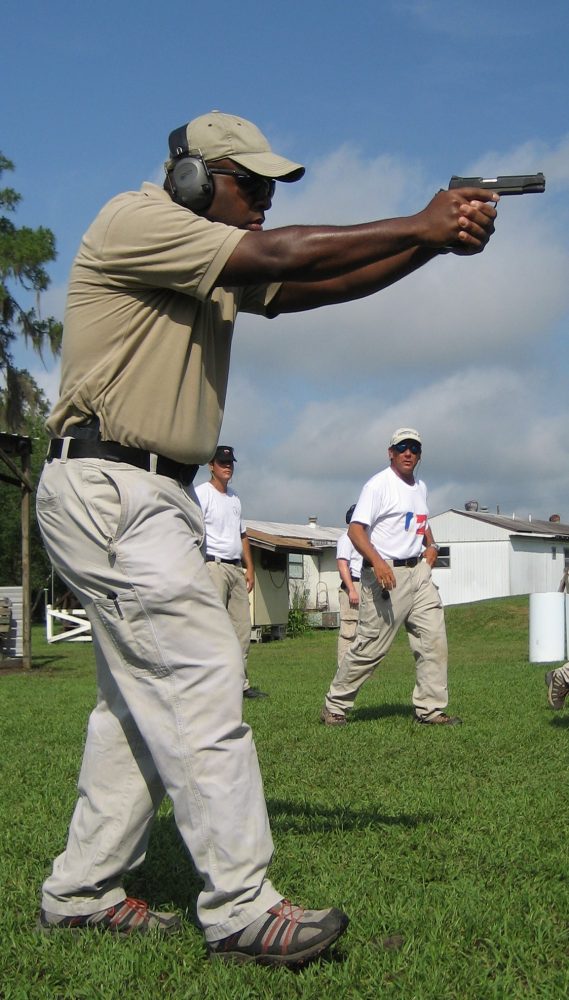
Once we recovered to the level at which we had finished TD1, the class moved on to emergency/speed reloads. Randy then instructed us on the four-step drawstroke, and we spent time running the draw dry and then working live-fire drills to fine tune the process, finishing with head-to-head competitions on the plate rack before lunch.
In the afternoon, we went over malfunctions, prone and braced kneel. We finished up TD2 with instruction on various handheld- and low-light techniques. Cain’s integrated system started to show itself in these low-light techniques. As it turned out, the tac-reload techniques he had shown us on TD1 were designed to integrate seamlessly with the flashlight techniques we learned on TD2.
TRAINING DAY THREE (TD3)
The final day began like the previous day, with dry-fire practice of the various manipulations we had learned up to this point, and then moving out to the line to warm up on accuracy drills. Before lunch we learned turns (both 90 and 180 degrees in both directions) and engaging multiple targets.
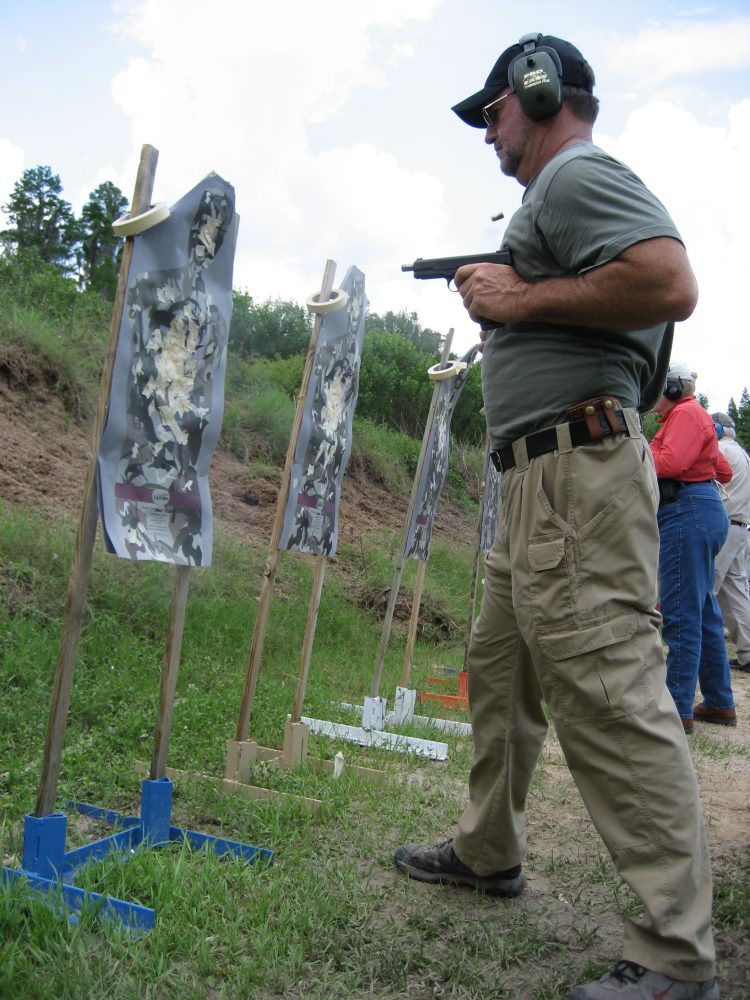
Cain has a way of breaking down complex skills to the sub-atomic level and then building each micro-skill upon the others to teach the bigger picture. He applied that methodology to both turning and engaging multiple targets, so that students could see an improvement from the beginning of the block to the end. This same theme carried through all the lessons and served not only to better instruct the students, but also to give us the tools we need to self-diagnose after we go home and are practicing on our own.
Cain rounded out TD3 with firing from the retention position at close range, lateral movement, and strong-hand and support-hand only drawing and firing. These close-in retention techniques, as well as the one-handed techniques, are all part of the system that TH101 is designed to introduce to the shooter, and become integral parts of subsequent courses.
CONCLUSIONS
This class, and Randy Cain in particular, met or exceeded all of my expectations. I have found that some students attend training expecting to improve exponentially by the end of the class, and in some cases where the student is starting out with no previous experience, this is possible. I signed up for TH101 with the expectation that Randy would be able to diagnose the issues that I was having, provide suggestions on how to correct these issues, and give me the tools I needed to take home and work out those issues through continuing practice.
Cain’s expectation of accuracy (“keep ’em all in a fist-sized group”) never wavered throughout the class, and he always took time to coach each student on ways to improve. Whether students were stuck at the shallow end of the pool like me or able to perform the drills with ease, Randy always expected improvement in either speed or accuracy, and he gave us feedback to enable us to make these improvements. He was able to balance speed and accuracy and continuously reminded students to “take the curve at the speed you can make the curve.” In other words, go as fast as you can and still get the hits.
Size and location of tape indicate trends in shooters’ abilities as class progresses. Targets are Randy’s own design and contain anatomical shapes hidden in camouflage pattern, as well as scoring rings not visible when shooting.
One of the things that impressed me most is that what Cain teaches is presented as a system. Techniques learned in TH101 foreshadow what you will learn if you take Carbine 1, or Practical Rifle, or even Close Quarters Tactics or a Force on Force class with Randy. This is due in no small part to his lifetime pursuit of the martial arts and bringing that sensibility to the firearms training world. Methodologies learned in TH101 lay the ground work for applications and techniques that will carry over across all platforms and even hand-to-hand techniques.
Having taken subsequent classes with Randy since my original TH101, it was interesting to go back and re-take the introductory class. Throughout the three days, I had many “ah ha!” moments when I realized that techniques he taught during his Carbine 1 course were so easy to pick up because he had laid the groundwork in TH101.
Southern Exposure is also a true gem in the Florida training community. You come to your first class a stranger, but you leave as family. Shooters come to Southern from all over the country, often driving right past other facilities on their way. The combination of Randy Cain and Southern Exposure is a perfect fit, and I recommend either or both to any shooter regardless of skill level. You will absolutely enjoy yourself and learn valuable skills.
SOURCES:
Cumberland Tactics
Dept. S.W.A.T.
P.O. Box 1400
Goodlettsville, TN 37070
(615) 351-5243
www.cumberlandtactics.com
Southern Exposure Training Facility
Dept. S.W.A.T.
12425 Old Dade City Road
Kathleen, FL 33849
(305) 934-1818
www.southernexposuretraining.com
